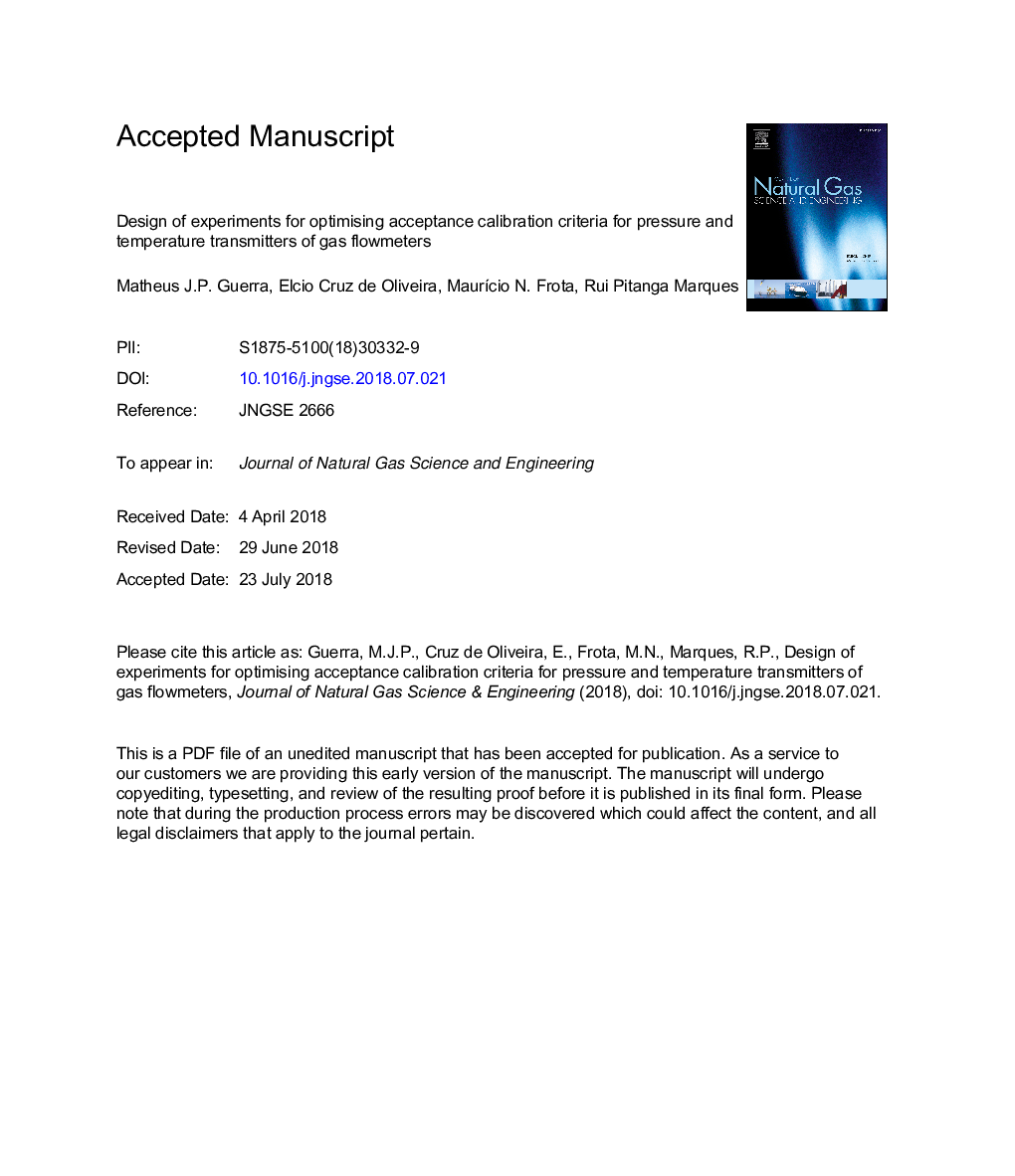| Article ID | Journal | Published Year | Pages | File Type |
|---|---|---|---|---|
| 8127780 | Journal of Natural Gas Science and Engineering | 2018 | 66 Pages |
Abstract
Calibration acceptance criteria for pressure and temperature measuring devices used in orifice plate gas flowmeters were specified. The study was motivated by the introduction of a Brazilian regulation that specifies technical and legal requirements for in-field measurements of oil and gas flows. In compliance with international best practices, the applicable regulation, which establishes uncertainty levels for flow measurements (1.5% for fiscal/custody transfer measurements and 2% for appropriation measurements), did not set up limits of acceptance of uncertainties associated with pressure and temperature measuring devices. The effects of these uncertainties in measurements were evaluated. By making use of the Design of Experiments and Response Surface Method (RSM), acceptance criteria were sought to comply with the applicable regulation. The use of the methodology proved to be very useful as low uncertainties were obtained in all ten metering stations investigated. In the worst cases (in three stations only), uncertainties were lower than 0.2% of the correspondent full-scale reading. The response surface methodology also showed that the minimum measuring capacity to meet the regulatory uncertainty requirements are 0.05% for differential pressure calibrators and 0.01% for the static pressure (relative to the full-scale reading).
Related Topics
Physical Sciences and Engineering
Earth and Planetary Sciences
Earth and Planetary Sciences (General)
Authors
Matheus J.P. Guerra, Elcio Cruz de Oliveira, MaurÃcio N. Frota, Rui Pitanga Marques,
